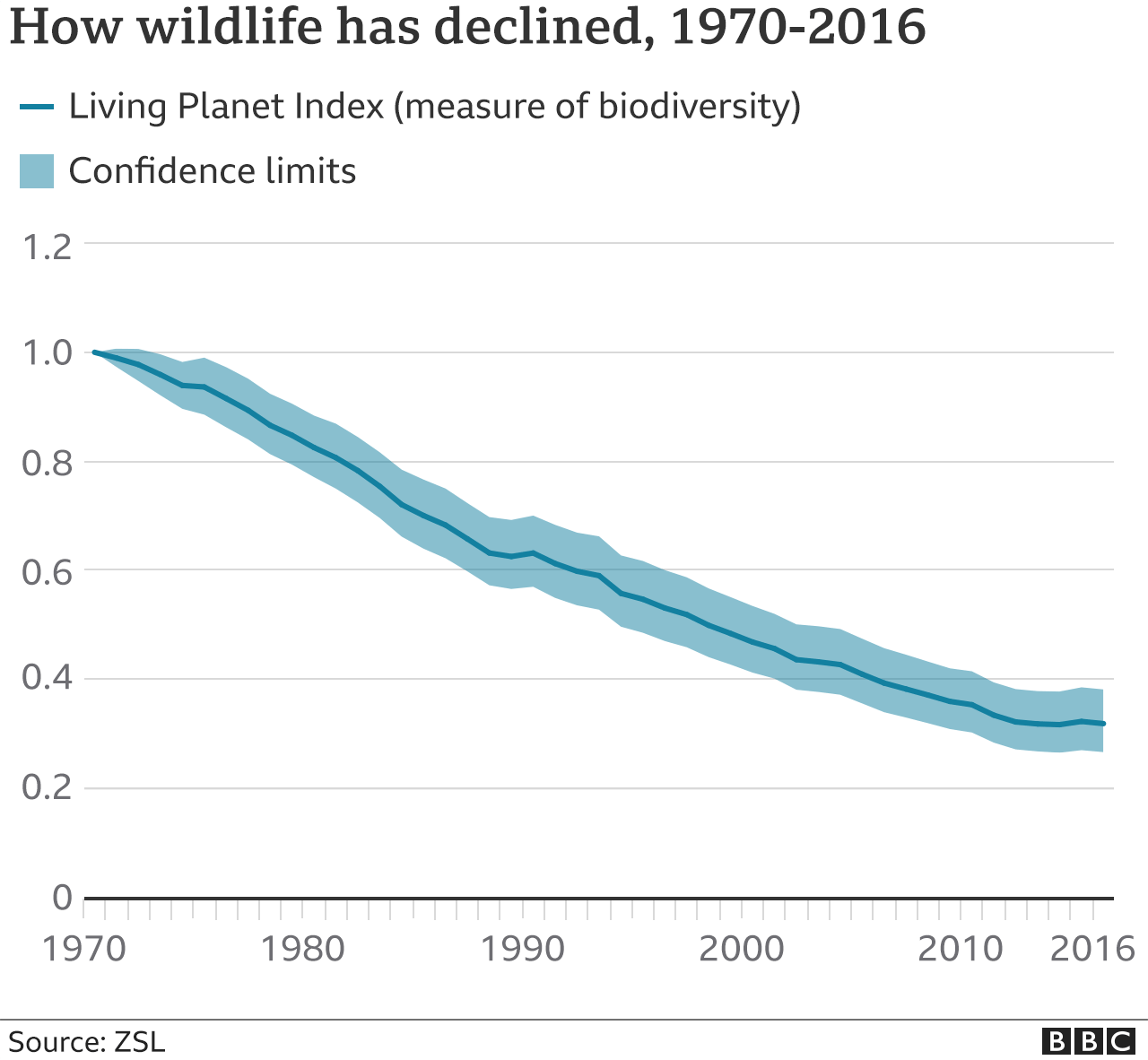BBC News: Wildlife in 'catastrophic decline' due to human destruction, scientists warn
"Wildlife populations have fallen by more than two-thirds in less than 50 years, according to a major report by the conservation group WWF.
The report says this "catastrophic decline" shows no sign of slowing.
And it warns that nature is being destroyed by humans at a rate never seen before.
Wildlife is "in freefall" as we burn forests, over-fish our seas and destroy wild areas, says Tanya Steele, chief executive at WWF.
"We are wrecking our world - the one place we call home - risking our health, security and survival here on Earth. Now nature is sending us a desperate SOS and time is running out."
The report looked at thousands of different wildlife species monitored by conservation scientists in habitats across the world.
They recorded an average 68% fall in more than 20,000 populations of mammals, birds, amphibians, reptiles and fish since 1970.
[...]
The largest declines are in tropical areas. The drop of 94% for Latin America and the Caribbean is the largest anywhere in the world, driven by a cocktail of threats to reptiles, amphibians and birds."

"Wildlife populations have fallen by more than two-thirds in less than 50 years, according to a major report by the conservation group WWF.
The report says this "catastrophic decline" shows no sign of slowing.
And it warns that nature is being destroyed by humans at a rate never seen before.
Wildlife is "in freefall" as we burn forests, over-fish our seas and destroy wild areas, says Tanya Steele, chief executive at WWF.
"We are wrecking our world - the one place we call home - risking our health, security and survival here on Earth. Now nature is sending us a desperate SOS and time is running out."
The report looked at thousands of different wildlife species monitored by conservation scientists in habitats across the world.
They recorded an average 68% fall in more than 20,000 populations of mammals, birds, amphibians, reptiles and fish since 1970.
[...]
The largest declines are in tropical areas. The drop of 94% for Latin America and the Caribbean is the largest anywhere in the world, driven by a cocktail of threats to reptiles, amphibians and birds."



